A growing homeless population, alarming increases in crime, and an idiotic government response, Denver residents be warned.
On September 17th, 2020 Mountain Time Media premiered their nearly hour-long documentary, Denver in Decay.
In one month, the film has nearly 100,000 views on YouTube.
The documentary focuses on the growing homelessness crisis, and the failure of Denver’s Mayors, John Hickenlooper, and Michael Hancock to address the problem.
The high-quality production of this film is undeniable.
High-resolution footage, smooth editing, and music, keep the viewer engaged.
Steffan Tubbs who wrote and directed the film, is also the President/CEO and Founder of Mountain Time Media.
Tubbs is also a radio host for 710 KNUS, Denver’s conservative AM radio stations, as well as a prolific social-media user.
Denver in Decay Deep Dive:
The movie starts with an Einstein quote that libertarian-types would agree with:
Nothing is more destructive of respect for the government and the law of the land than passing laws which cannot be enforced.
Albert Einstein
The context of this quote provides an inadvertent solution to the current crime, and homeless problem in Denver.
Einstein’s quote is relating his view of alcohol prohibition in the United States in 1921.
Ending the prohibition on drugs, could allow addicts to get the help they need, and put the criminals out of business.
Back to the film.
The film continues with the elections of several prominent minority Democratic Denver Mayors, and Obama’s appearance at the Democratic National Convention in Denver in 2008.
A primary focus of the film is “Denver’s Road Home” Initiative (DRH), which was tasked in 2005 with ending homelessness in Denver in 10 years.
The film does a great job of showing that John Hickenlooper’s greatest accomplishment as Mayor was producing silly marketing campaigns.
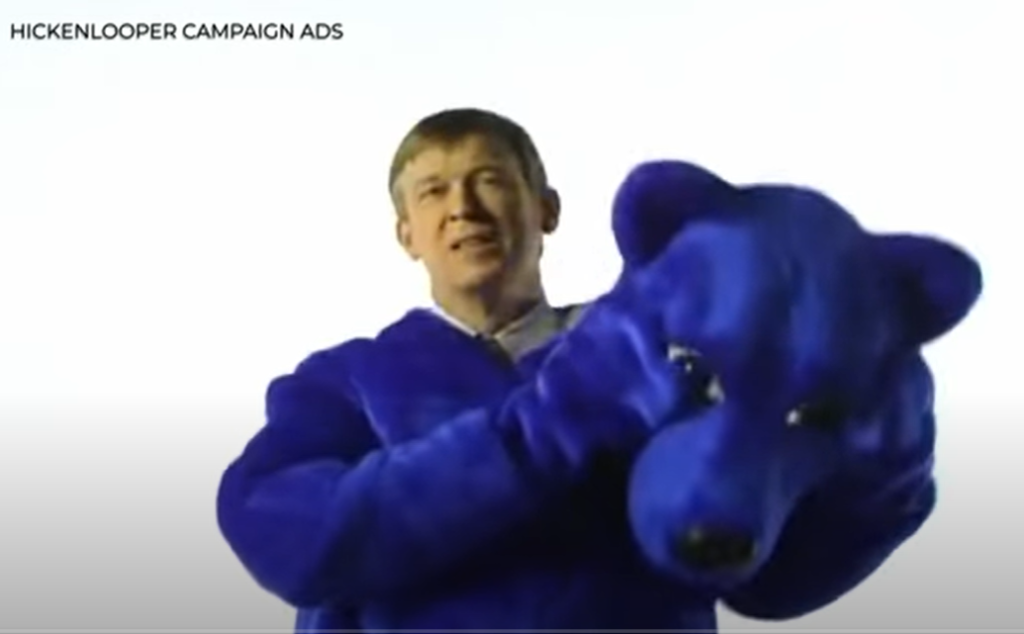
Jamie Van Leeuwin, leader in the gay community, social justice advocate (recently hired by the Emerson Collective), and Hickenlooper crony, features prominently as the Executive Director of DRH.
The film then moves to 2011 when Hickenlooper resigned as Mayor to run for Governor, and Michael Hancock became Mayor.
With the departure of Hick, and Van Leeuwin, Bennie Milliner became DRH’s Executive Director under Hancock and served until 2017.
After his failings in DRH, Milliner was named Director of Community Engagement at the Denver Sheriff’s Office, a position created by Mayor Hancock.
Milliner was also a donor to anti-gun extremist Mike Johnston‘s Governor campaign in 2016.
The film downplays the fundraising efforts of DRH which used “donation meters” on downtown sidewalks, and loose change collectors at Denver International Airport as tools to raise money for Denver’s homeless population.
The fact is DRH was able to raise millions of dollars in private donations during Van Leeuwin’s tenure, but those donations evaporated under Milliner’s charge.
The next scene shows Hancock looking extremely ridiculous during the 2015 PJ Party DRH fundraiser where he sings and dances.
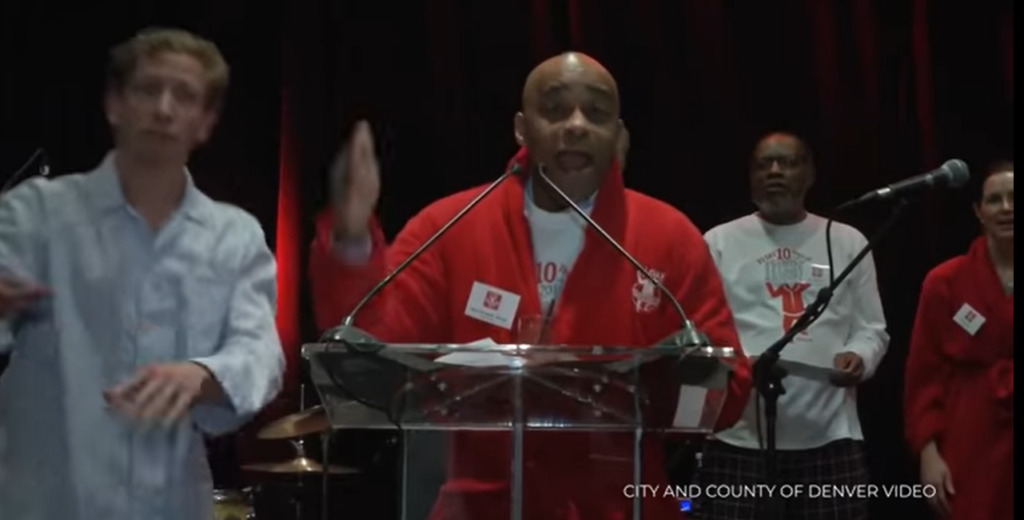
2015 was also the 10-year mark of Hickenlooper’s failed 10-year plan to end homelessness.
One of the best moments in the documentary is Hickenlooper’s 2015 admission that “ending homelessness in 10-years” was merely a marketing slogan.
Hickenlooper, always the elitist, sees no problem with making claims he knows are false for his political purposes.
Around the 12-and-a-half minute mark, the film turns to the recent protests in Denver.
Tubbs himself was reporting on the ground with grainy cell phone footage to prove it.
The rest of the film focuses on a series of statements by local Republican politicians, business owners, and homeless advocates interspersed with images of Denver’s graffiti, property destruction, and homeless camps.
The local political figures include:
Senate Minority Leader Chris Holbert (Republican, Douglas County)
Jamie Gielles (Democratic 2019 candidate for Denver mayor who forced Hancock into a runoff)
Penfield Tate (Democratic 2019 candidate for mayor)
Casper Stockham (3-time Republican candidate for Congress)
Two individuals listed as Denver Business Owners are also quoted extensively:
Aaron LaPedis, the self-proclaimed “Garage Sale Millionaire” (and appears to be in front of a green-screen)
James Hodgkinson, who lived on the streets and turned his life around, seems to be the owner of American West Concrete.
The film has great footage of the destruction at the State Capitol, broken windows, graffiti, garbage, and broken windows.
Jay Reitman, a US Army Veteran sporting a shirt with IDC in the NFL logo, is shown cleaning a memorial trashed by protestors in Denver.

The homeless camp near Moray Middle School made headlines this summer, and the film includes some footage of the camp.
The controversial homeless camp cleanups are shown, but not mentioned.
Homeless camp cleanups/sweeps are a story that remains to be heard for many Coloradoans.
Another interesting moment is after Jared Polis is pressured by the press on the homeless camp outside the Governor’s mansion, and the camp is cleaned up the morning after the press conference.
Showing the viewers that politicians act only when they are pressured.
Perhaps the best line in the film is when Polis states, “I don’t follow Denver politics.”
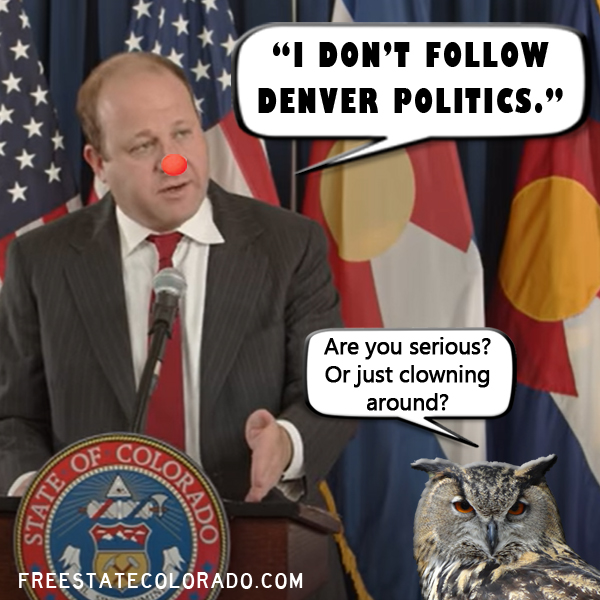
The context of the quote is Polis excusing his ignorance of the Denver camping ban.
The film then brings in two very interesting advocates for the homeless, Paul Scudo, the Executive Director of Step Denver, and Benjamin Dunning of Denver Homeless Out Loud.
Scudo has a great presence in the film, and Tubbs donated nearly $20,000 of the money raised for Denver in Decay to Step Denver.
Dunning has some very interesting lines in the film, such as “warehouse, and disperse” as the strategy for dealing with homeless.
Dunning also worked to support Initiative 300 which would have repealed the Denver camping ban (Initiative 300, would have ended the camping ban in Denver was soundly defeated by Denver voters in 2019).
The film is right that Mayor Hancock, and the City Council have failed to address the homeless issue, and have failed to enforce Denver’s urban camping ban.
At the 30-minute mark, Britta Fisher, the Executive Director, of the Department of Housing Stability (HOST) makes an appearance.
HOST was established nearly a year ago, by Hancock’s executive order, on the heels of a nasty audit of the Denver Economic Development & Opportunity office.
According the Denverite, HOST, “combines economic development staffers with employees from Denver’s Road Home, which has been part of Denver Human Services.”
At the 31:10 minute mark, a graphic displays the “Estimated cost of Metro Denver Chronically Homeless:”
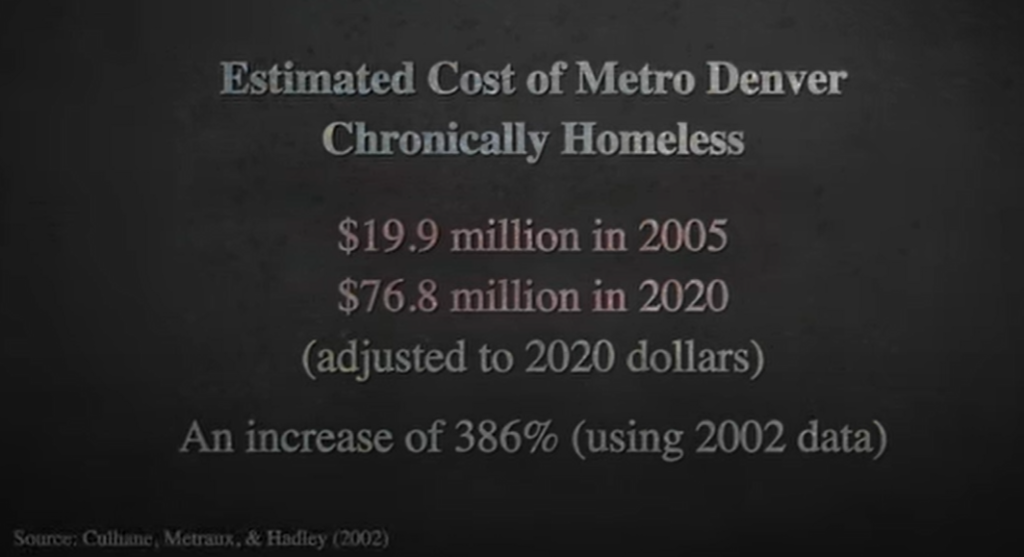
The figures come from a study done in New York City in the late 1980’s through the late 1990’s.
Although the film doesn’t mention it, I found it interesting that the study found a 40% decrease in the use of public services after homeless individuals were “placed in supportive housing.”
The graphic also relies on data from a 2005 and 2019 HUD point in time (PIT) reports.
The filmmakers use an estimate to calculate the number of chronically homeless individuals in Metro Denver, presumably because the 2020 PIT report wasn’t released during production.
The filmmakers estimate there are 1,404 chronically homeless individuals in Metro Denver (at a cost of $56.8 million), however, the 2020 PIT report (which is now released) calculates 1,840 individuals chronically homeless in Metro Denver (at a cost of $74.4 million).
The chronically homeless population in Metro Denver has grown even beyond the estimates of the filmmakers.
Another great line is at 32:54 when Hancock honestly claims, “It’s easy to demonize the government.”
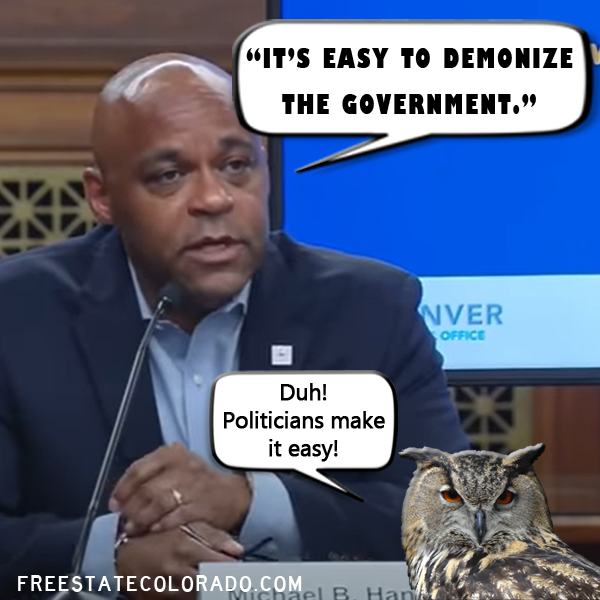
The film circles back on the summer violence of 2020.
On Sunday July 19th, 2020 the sixth-annual Back the Blue Rally erupted in violence.
Jay Reitman, shown earlier cleaning a military memorial, was one of the victims at the rally.
Much of the controversy from the Back the Blue Rally violence is a claim from Denver Police Union President Nick Rogers that a “stand-down” order was issued.
The stand-down order was heroically broken by one lieutenant who attempted to stop the violence against orders.
Denver Police Chief Paul Pazen, although not filmed on camera, is heard claiming there wasn’t a stand down order, during the violence during the Back the Blue Rally.
Another favorite moment in the film is at 37:46 when a woman (presumably a protestor) nicely warns Tubbs (who is filming civil unrest around the Capitol on May 29th) about incoming police action.
Tubbs rightly criticizes the police for not warning protestors to disburse.
The film also shows marketing material from the organized protests throughout the summer, but does not address the organizers (a good idea for another documentary).
An emotional moment occurs when Holly Brooks, owner of the iconic Capitol Hill Books, speaks about the challenges her store and the community is facing.
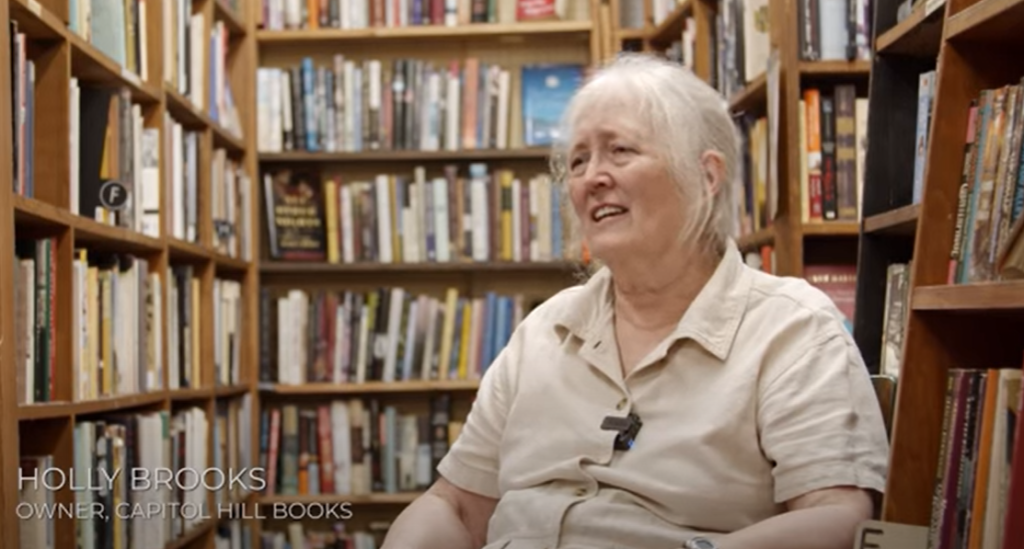
Conclusion
Denver in Decay provides a look at the failures of Denver’s government to address the growing chronic homeless population.
It’s no surprise to libertarian-types that government programs are destined to fail.
It was very interesting to hear some candor from Hickenlooper (ending homelessness was a marketing campaign), Polis (I don’t follow Denver politics), and Hancock (It’s easy to demonize the government).
Also, viewers are shown that politicians only act when they feel pressure.
Overall, the film is good, and I hope many other documentaries about the Denver Metro Area, and Colorado are produced.
With nearly 2,000 chronically homeless individuals in the Denver Metro Area, and thousands of victims of domestic abuse looking for a place to stay, this movie serves as a wake-up call for Coloradoans who are unaware of this tragic issue.
I’m also glad to see that Mountain Time Media provided sources for the data in the film.
Watch Denver in Decay if you haven’t seen it:
And let me know your thoughts in the comments below!
Sign-up for Free State Colorado’s Monthly Email Newsletter:



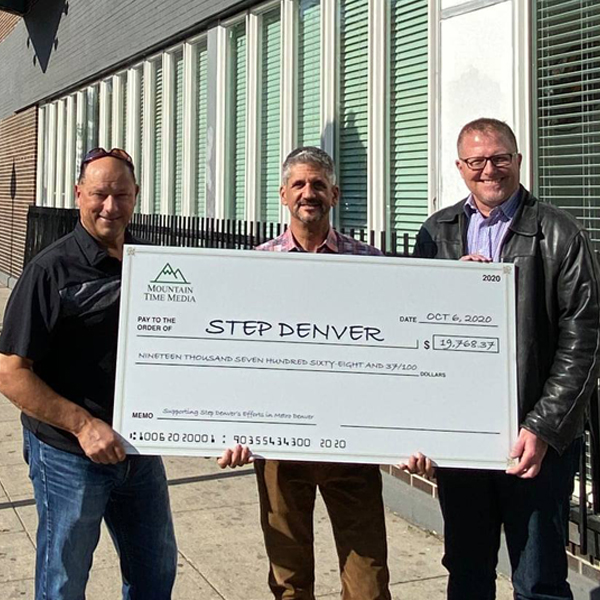

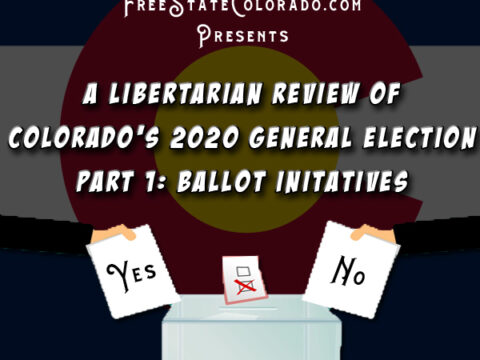
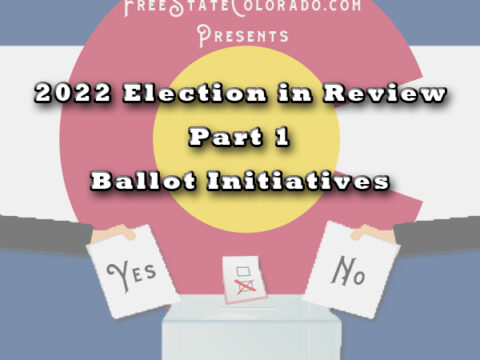


I moved to Denver metro in 1997. Denver is a totally different city today. It used to be a safe, clean, desirable and prosperous city , not anymore . What a sad situation, and all due to radical left-progressive Democrats running the city. Denver is on its way to becoming another west coast city, an LA, SFO, Portland, Seattle. What a tragedy.